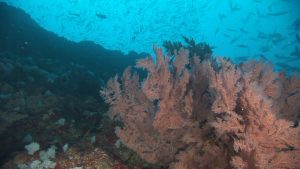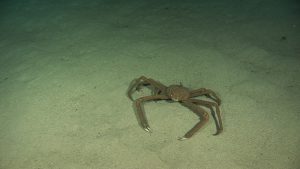Submersible Surveys
Deep rocky banks and outcrops, underwater pinnacles, and submarine canyons, ranging in depth from 30 m to >1,000 m, are important habitats in California waters. These deepwater habitats comprise 75% of the seafloor in state waters within the Central Coast region, and are home to hundreds of species of fishes and macroinvertebrates. Flatfishes, combfishes, poachers, and eelpouts are the dominant fish taxa on soft sediments, along with invertebrates such as sea pens and seastars. Rocky areas are dominated by more than 40 species of rockfishes and many invertebrate taxa such as feather stars, anemones and gorgonian corals. Although deep habitats on the continental shelf and upper slope contain a high diversity of species that have been fished for decades, far less is known about these habitats and associated communities than those occurring in shallow water. Utilizing manned submersibles is a proven tool for nonextractive research on fishes, invertebrates and associated seafloor habitats in waters too deep for other survey methods.
DeepSee, Cocos Islands and Las Gemelas Seamounts
Delta Submersible Surveys of Marine Protected Areas (2007-2011)



